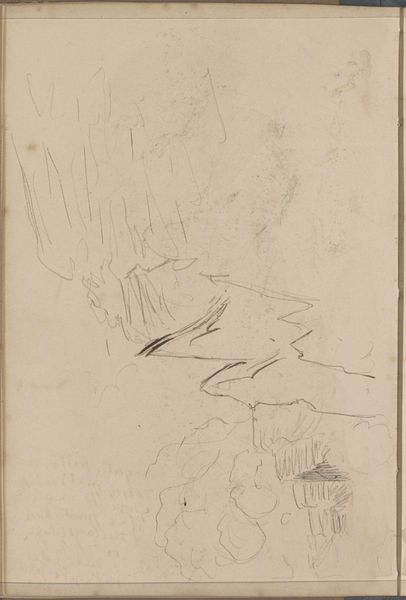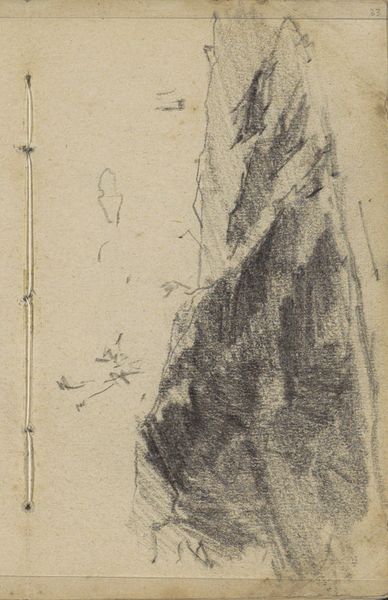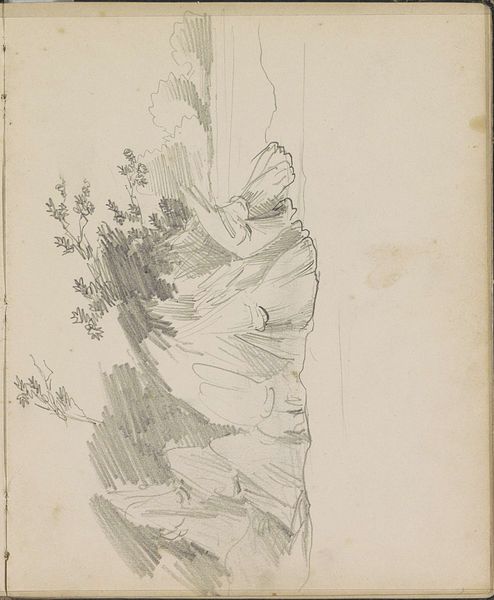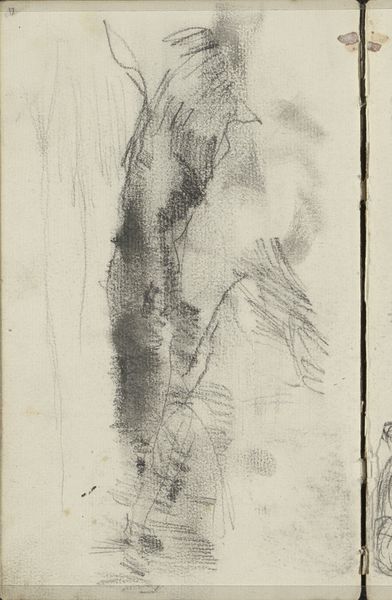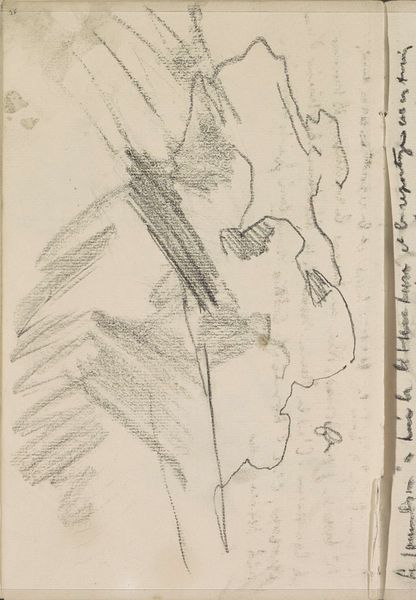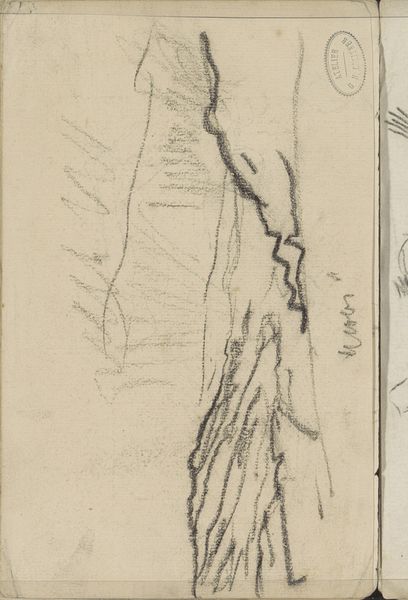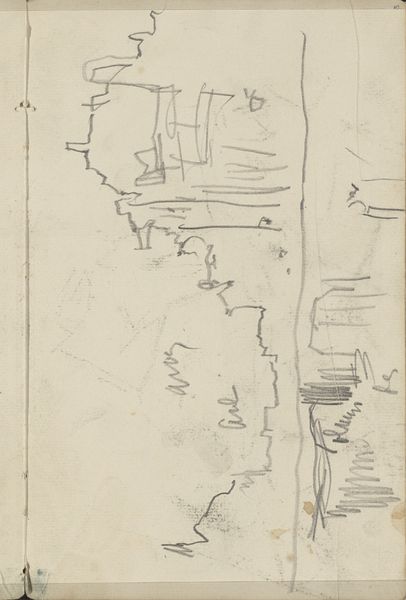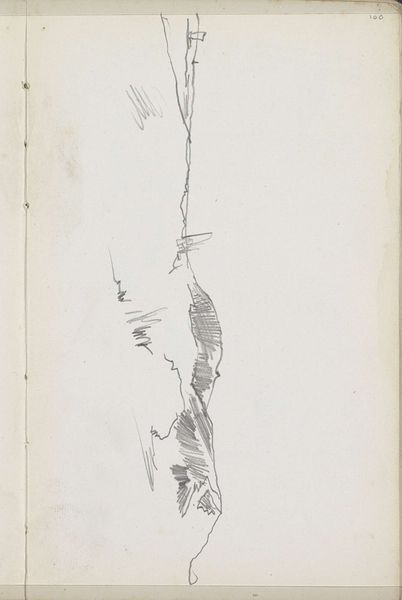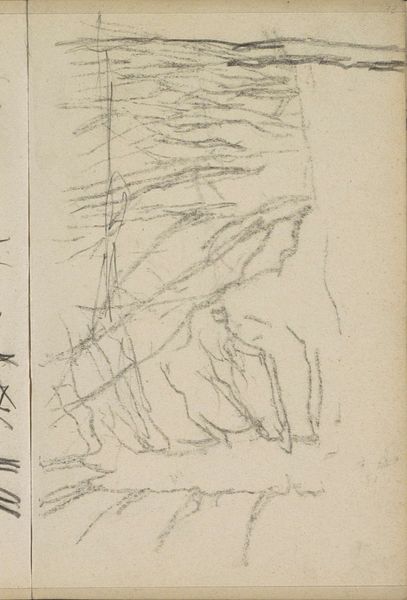
drawing, pencil
#
drawing
#
impressionism
#
pencil sketch
#
landscape
#
pencil
#
line
Copyright: Rijks Museum: Open Domain
Curator: This is George Hendrik Breitner’s "Landschap," a pencil drawing from around 1880 to 1882, currently held at the Rijksmuseum. Editor: It's interesting. The sketchiness has an almost frantic energy. It gives off a haunting feel. Curator: Breitner, though known for his cityscapes, demonstrates his Impressionist tendencies here through fleeting moments captured in nature, showing what a sharp observer he truly was. It's intriguing, don't you think, seeing him work with a landscape, away from his more known depictions of Amsterdam? Editor: Definitely, a nice change of scenery. His landscape sketches are like finding secret whispers compared to the booming voice of his paintings. You feel closer to the artist’s initial thought, which I find is what landscape is all about, no? That private reflection in nature? Curator: Precisely! Landscape, as a genre, afforded artists like Breitner an arena for studying light and atmosphere, especially crucial during the Impressionist movement. He wasn’t aiming for topographical accuracy, but something far more poetic. Editor: The stark, contrasting pencil strokes give it that atmospheric touch. The hatching looks like dark looming clouds. It's raw, almost like seeing nature caught in the middle of some deep and secret internal conflict, and the blank spaces seem pregnant with emotion. It makes you think about the nature in yourself. Curator: That speaks volumes about the personal encounter Breitner himself must have experienced. What might these stark shapes be, these abstract vertical structures? It's less about what's there and more about how it feels, its presence and its absence. That is what moves beyond traditional depictions of the Dutch landscape toward a more individualistic Expression. Editor: I guess this teaches you something about looking deeper into art in general; finding emotion in simplicity and feeling the story, not just seeing it. What do you think, is it a story about a place or just Breitner wrestling with his creative self in the silence of nature? Curator: I lean towards the former feeding into the latter. Both are interlaced in his work as social critique, no? Thanks for sharing that creative perspective. Editor: Absolutely, thank you for illuminating its history.
Comments
No comments
Be the first to comment and join the conversation on the ultimate creative platform.


